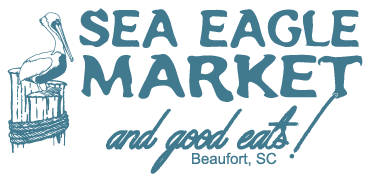Atlantic Striped Bass
Atlantic Striped Bass just so happens to be the state fish of South Carolina – as well as Rhode Island and Maryland. It is also the state saltwater fish of New York, Virginia and New Hampshire. They are also found in the Minas Basin and Gaspereau River in Nova Scotia Canada. The Atlantic Striped Bass, also called Virgina Striped Bass, stripers, linesiders, rock, pimpfish,or rock fish has a streamlined, silvery body marked with longitudinal dark stripes running from behind the gills to the base of the tail. The maximum size of the fish is 6.6 feet and the maximum scientifically recorded weight is 125 pounds. The average weight is 30 to 40 lbs and striped bass are believed to live for up to 30 years. Striped bass are native to the Atlantic coastline of North America from the St. Lawrence River into the Gulf of Mexico to approximately Louisiana. They are anadromous fish that migrate between fresh and salt water. Striped bass spawn in freshwater and although they have been successfully adapted to freshwater habitat, they naturally spend their adult lives in saltwater.
First you might be wondering what anadromous means – think Salmon. They swim upstream to breed. Second what else makes this fish so cool? Well – notice the tag in the mouth of our fish in the picture?
Due to over-harvest and habitat degradation, striped bass populations suffered severe declines in the 1970’s. In 1979, the Emergency Striped Bass Act was enacted to assess the causes of the decline and recommend measures for restoration. From 1985 to 1990, a fishing moratorium was imposed by the coastal states from North Carolina to Maine to protect the wild striped bass stocks. During the moratorium and subsequent years, over 9 million tagged hatchery-reared striped bass fingerlings were released into the Chesapeake Bay. Hatchery-reared striped bass were marked with internal binary coded wire tags (short words that is: computer chips). These tags were used to gather information on the contribution of hatchery-reared fish to the wild population. As hoped, wild fish soon out-numbered hatchery fish in the Chesapeake Bay. By 1996, the Maryland Department of Natural Resources reported that the young-of-the-year index was the highest it had been since the survey was begun in 1954.
To continue monitoring striped bass populations, the U.S. Fish and Wildlife Service and partners have tagged almost 500,000 striped bass with external anchor or “spaghetti” tags as part of the coast-wide striped bass cooperative tagging program. Recreational and commercial fishermen play a crucial role in making the tagging program successful each year. Each state is given a specific number of recaptures each year. When that number of recaptures has been met, the Striped Bass fishing season for the year is over. Each fisherman does their part to report their catch, to keep the population flourishing.
If you catch a tagged striped bass, please cut off the tag and record the date, location, length, weight and method of capture. Call the U.S. Fish and Wildlife Service at 1-800-448-8322 to report the information. Anyone reporting a tag will receive a certificate of participation and a reward.

